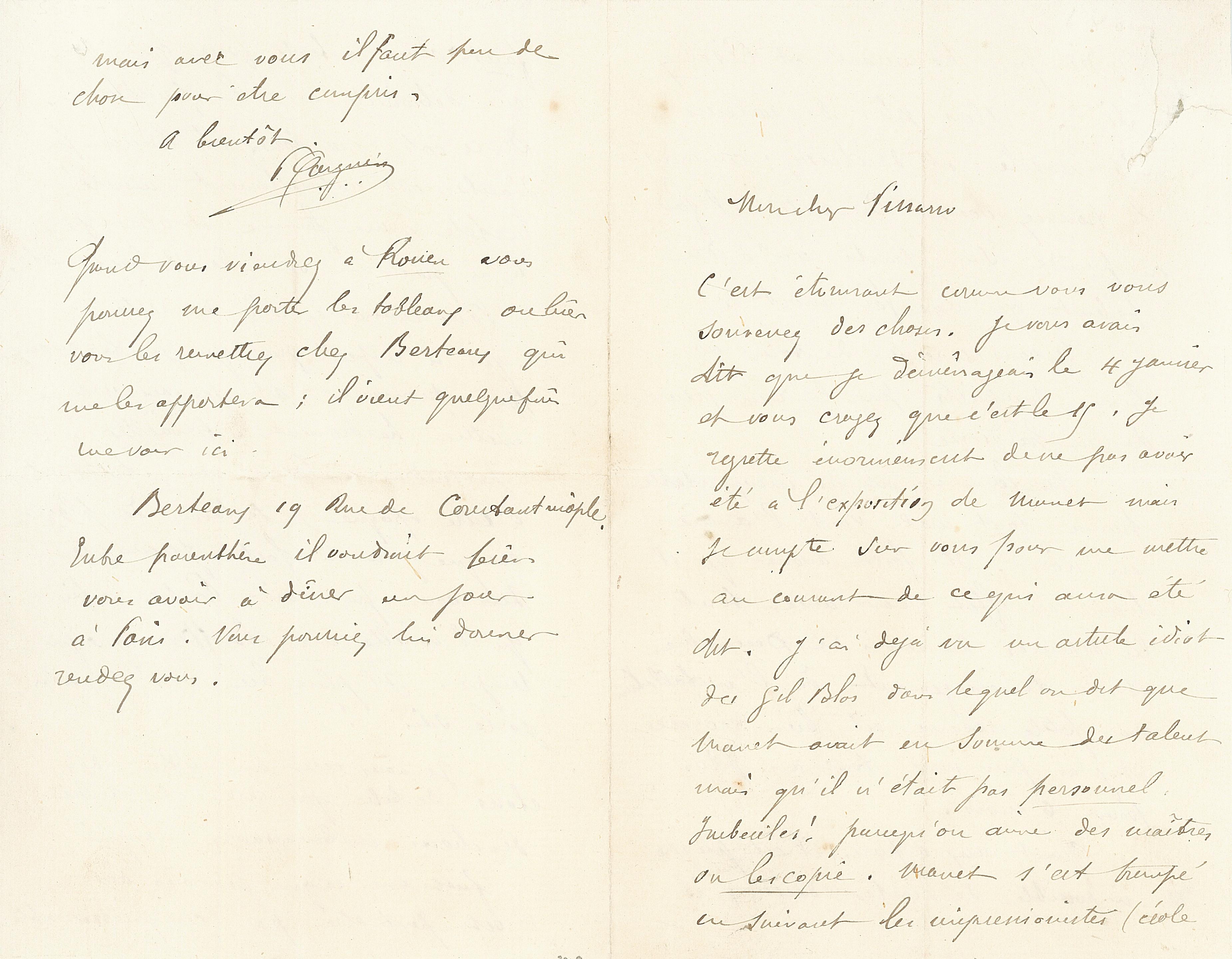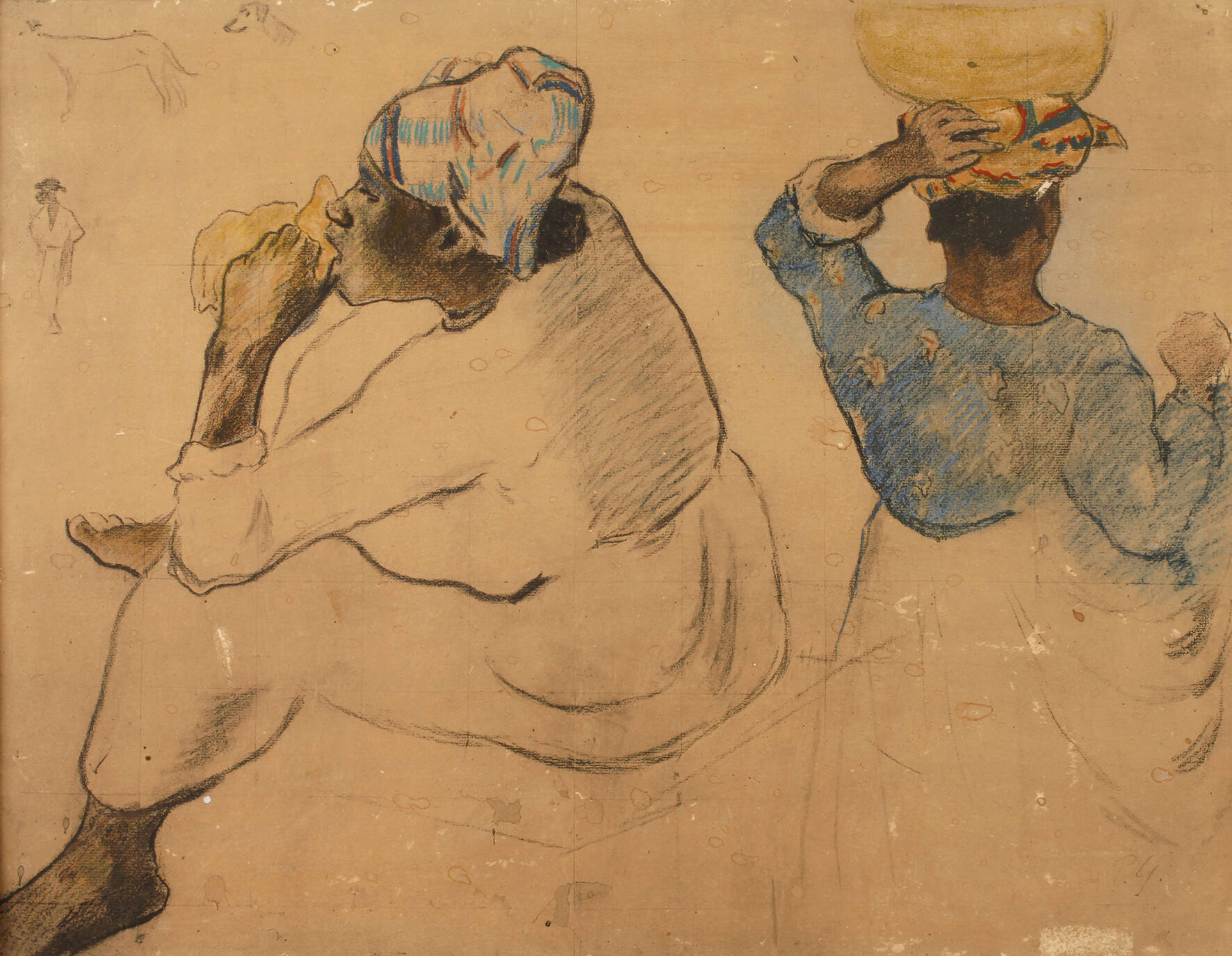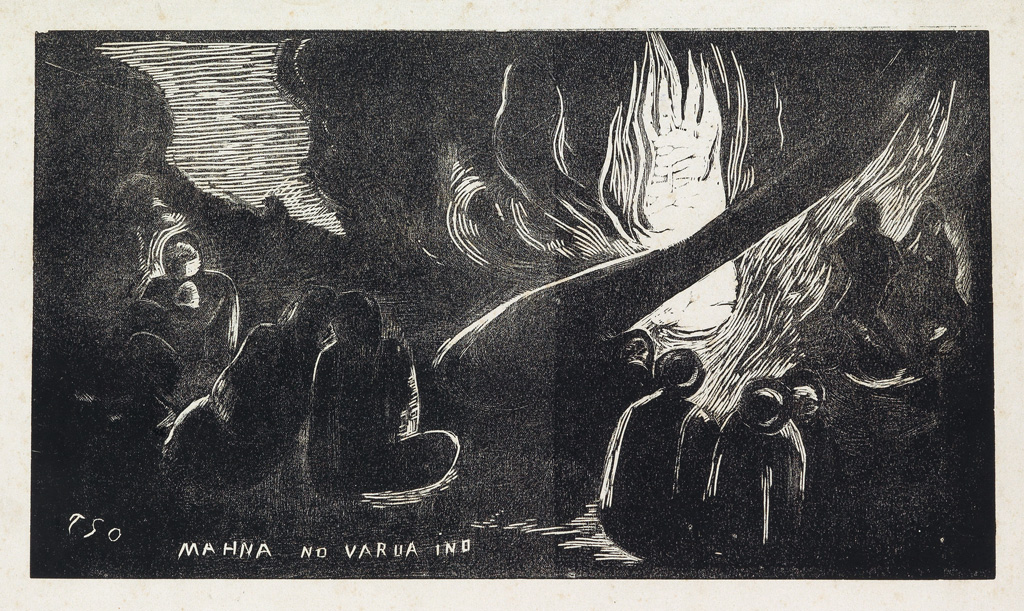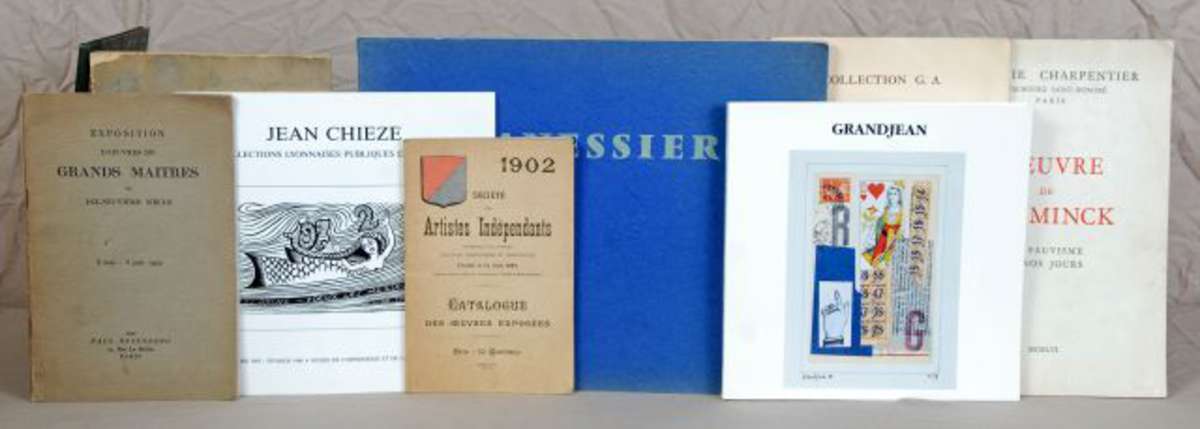GAUGUIN, Eugène-Henri-Paul (1848-1903). Autograph letter signed ("P Gauguin") TO CAMILLE PISSARRO (1830-1903), incorporating a DRAWING OF A MAN IN TOP HAT, n.p., 26 December 1882. 3 pages, 8vo, FINELY FRAMED in a custom double-sided gilt and brown frame with blue and taupe linen mat and image of Gauguin (unexamined out of frame). In French. GAUGUIN ON FINANCIAL TROUBLES AND RECENT EXHIBITIONS: "COME WHAT MAY, ONE MUST REMAIN PHILOSOPHICAL" A fine, illustrated letter written at an critical point in Gauguin's career as an artist. Having painted as an amateur for several years, in 1882, Gauguin lost his bank job after a crash in the stock market and was forced to support himself and his family solely from his painting. Here, painfully aware of his financial straits, he writes to his friend and fellow painter, Pissarro: "Please be so kind as to let me know if I may count on the 800 francs for the first of January. You know how much one is tormented sometimes when payments are due and I am in that situation at present. I therefore need to know where I stand, please let me know." Apprehensive of the future, he writes: "The year '83 will be hard. Oh well! Come what may, one must be philosophical." Indicating frustration with his painting, he is consoled by a recent show at the Petit gallery: "I went to see the exhibition Petit...I am rather glad to see that painting is not so easy for others, too; so the slow achiever is consoled to see how weak these famous people can be. It seems to me that Duez is turning into Cazin, who is not first-rate himself, but is fundamentally monotonous. His [canvases depicting] nights where one can see as if in daytime lack observation and have the same aspect as if it were high noon. It is however worth noting that the public does notice this to a certain extent." Gauguin senses an opportunity: "It seems to me that all of these people are playing into our hands and that there is a place to take right now at their sides. If only there were some agreement! If people like me are not wanted, well then by God let them say so, I'll make myself scarce..." In a postscript, the artist's financial desperation is clear as he reminds Pissarro: "Do not forget the beginning of my letter." Gauguin's relationship with Pissarro had profoundly affected his artistic development. The two were in touch by June of 1874, and worked together in Paris at the Académie Colarossi. Pissarro was not only a friend and peer but teacher as well; he encouraged Gauguin to join the new circle of Impressionists, and Gauguin began to make more use of light and color in his landscapes. Joined by Cézanne, the two painted together in Pontoise in 1881. Around this time, Gauguin began a series of moves with his family, but remained financially unstable. In the mid 1880s, Gauguin's style took a marked shift away from Impressionism, alienating him from his former social circle, including Pissarro, who criticized him for regressing from the Impressionists' modern philosophy and technique.
GAUGUIN, Eugène-Henri-Paul (1848-1903). Autograph letter signed ("P Gauguin") TO CAMILLE PISSARRO (1830-1903), incorporating a DRAWING OF A MAN IN TOP HAT, n.p., 26 December 1882. 3 pages, 8vo, FINELY FRAMED in a custom double-sided gilt and brown frame with blue and taupe linen mat and image of Gauguin (unexamined out of frame). In French. GAUGUIN ON FINANCIAL TROUBLES AND RECENT EXHIBITIONS: "COME WHAT MAY, ONE MUST REMAIN PHILOSOPHICAL" A fine, illustrated letter written at an critical point in Gauguin's career as an artist. Having painted as an amateur for several years, in 1882, Gauguin lost his bank job after a crash in the stock market and was forced to support himself and his family solely from his painting. Here, painfully aware of his financial straits, he writes to his friend and fellow painter, Pissarro: "Please be so kind as to let me know if I may count on the 800 francs for the first of January. You know how much one is tormented sometimes when payments are due and I am in that situation at present. I therefore need to know where I stand, please let me know." Apprehensive of the future, he writes: "The year '83 will be hard. Oh well! Come what may, one must be philosophical." Indicating frustration with his painting, he is consoled by a recent show at the Petit gallery: "I went to see the exhibition Petit...I am rather glad to see that painting is not so easy for others, too; so the slow achiever is consoled to see how weak these famous people can be. It seems to me that Duez is turning into Cazin, who is not first-rate himself, but is fundamentally monotonous. His [canvases depicting] nights where one can see as if in daytime lack observation and have the same aspect as if it were high noon. It is however worth noting that the public does notice this to a certain extent." Gauguin senses an opportunity: "It seems to me that all of these people are playing into our hands and that there is a place to take right now at their sides. If only there were some agreement! If people like me are not wanted, well then by God let them say so, I'll make myself scarce..." In a postscript, the artist's financial desperation is clear as he reminds Pissarro: "Do not forget the beginning of my letter." Gauguin's relationship with Pissarro had profoundly affected his artistic development. The two were in touch by June of 1874, and worked together in Paris at the Académie Colarossi. Pissarro was not only a friend and peer but teacher as well; he encouraged Gauguin to join the new circle of Impressionists, and Gauguin began to make more use of light and color in his landscapes. Joined by Cézanne, the two painted together in Pontoise in 1881. Around this time, Gauguin began a series of moves with his family, but remained financially unstable. In the mid 1880s, Gauguin's style took a marked shift away from Impressionism, alienating him from his former social circle, including Pissarro, who criticized him for regressing from the Impressionists' modern philosophy and technique.















Try LotSearch and its premium features for 7 days - without any costs!
Be notified automatically about new items in upcoming auctions.
Create an alert